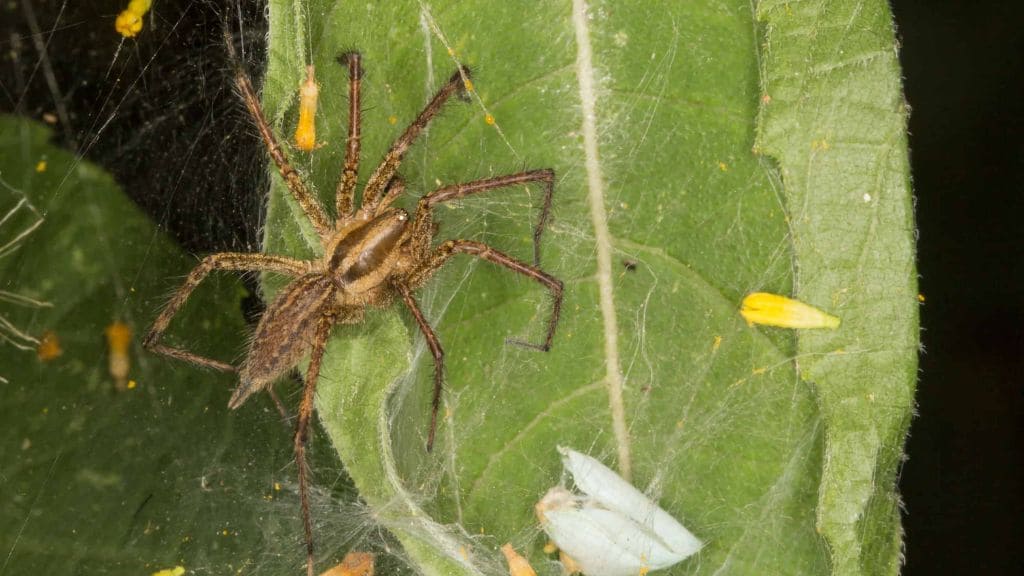Unwelcome guests with eight legs might be making themselves at home in your house, but how much do you really know about these arachnids? Spiders are more than just creepy crawlies; they play vital roles in controlling insect populations and contributing to the ecological balance in our homes. Yet, their presence can be unsettling, especially when we aren’t sure which types of spiders have moved in with us.
In this comprehensive guide, we dive into the diverse world of house spiders, from the harmless Daddy Longlegs to the potentially dangerous Black Widow. By familiarizing yourself with their appearances, habits, and habitats, you’ll be better equipped to identify and manage these arachnids. Understanding these spiders not only helps in addressing any concerns you might have but also sheds light on their beneficial roles.
Whether you’re looking to keep your home spider-free or simply curious about your eight-legged neighbors, this guide provides essential insights. From practical tips on prevention to distinguishing features of each spider species, we’ve got you covered. Embrace your newfound knowledge to maintain a safe and balanced home environment.
American House Spider
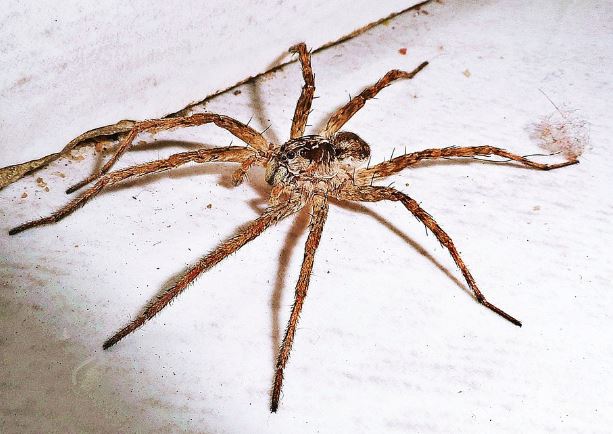
The American house spider, known scientifically as Parasteatoda tepidariorum, is a common inhabitant in homes across North America. These small arachnids, typically the size of a nickel, possess a round abdomen and are often gray with white markings. They are frequently found in dark, concealed areas such as corners, underneath cabinets, basements, and garages, especially near windows where flies and other insects might enter. Despite their somewhat intimidating appearance, American house spiders are harmless to humans. Their bites are not venomous, and they rarely bite unless provoked. These spiders are beneficial in homes as they help control pest populations by catching and consuming insects in their characteristic tangled webs. Understanding the American house spider’s role in your home can help reduce unnecessary fear and foster a greater appreciation for these helpful creatures.
Wolf Spider

The wolf spider is a fascinating and diverse arachnid, with over 200 species scattered across various environments. Unlike many spiders that rely on webs to catch prey, wolf spiders are active hunters, often pursuing their targets with remarkable agility. They are typically identified by their robust bodies and varying colors, including shades of gray, brown, or black. The largest species can grow up to an inch and a half in length, and their hairy appearance can sometimes make them resemble tarantulas.
Wolf spiders are primarily nocturnal and are commonly found in dark, enclosed spaces such as basements, garages, and sheds. Outdoors, they may be spotted around debris, under boards, or in crevices. Despite their somewhat intimidating appearance, wolf spiders are generally not a threat to humans. They would rather hide than bite, and their bites, if they occur, are typically harmless, causing only minor irritation or discomfort. Their role as predators of other insects makes them beneficial in managing pest populations around the home.
Black Widow
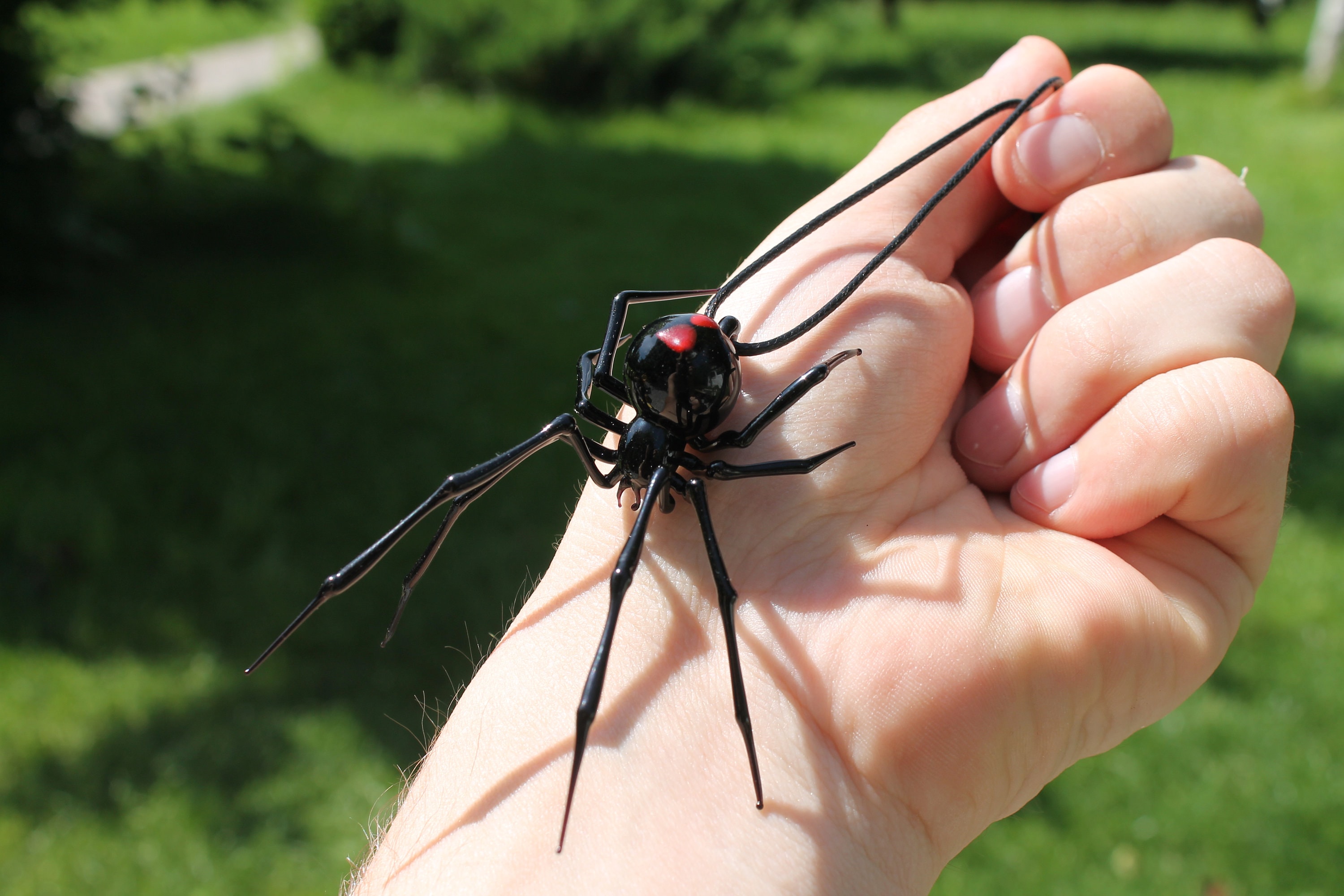
The black widow spider is notorious for its striking appearance and potent venom, making it one of the most recognizable and feared spiders in North America. Characterized by its glossy black body and the signature red hourglass-shaped marking on the underside of its abdomen, the black widow is both intriguing and dangerous. Some individuals may also have additional red markings on their back, further distinguishing them from other species.
Black widows prefer to inhabit dark, secluded areas with ample edges and corners, such as basements, garages, and outdoor structures like mailboxes or woodpiles. They often construct irregular, tangled webs where they can hide and ambush unsuspecting prey. Despite their fearsome reputation, black widows are typically not aggressive and will only bite in self-defense or if accidentally disturbed.
A bite from a black widow can be medically significant, causing intense pain, muscle cramps, nausea, and in severe cases, systemic reactions. Fortunately, fatalities are extremely rare, with the last death related to a black widow bite in the U.S. occurring in 1983. Immediate medical attention is essential if bitten, as prompt treatment can effectively manage symptoms and prevent complications. The black widow’s potent venom is a defensive mechanism, evolved to help them capture prey and deter predators, but it is important to exercise caution and respect their space.
Brown Recluse
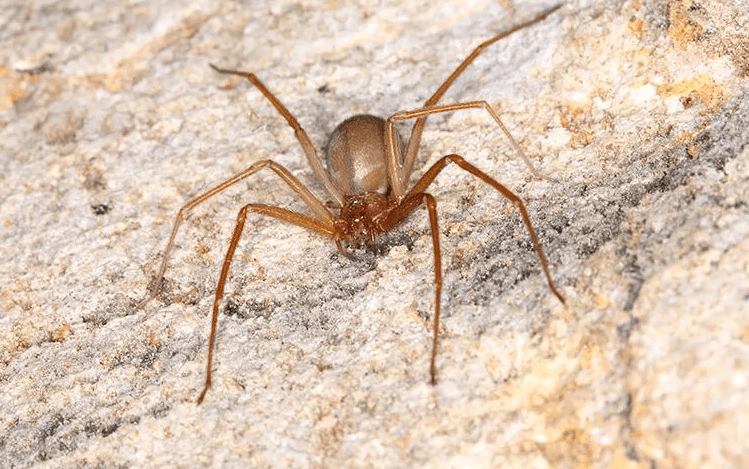
The brown recluse spider, scientifically known as Loxosceles reclusa, is one of the most concerning house spiders due to its potentially dangerous bite. Identifiable by its light brown color and a distinctive violin-shaped marking on its back, the brown recluse is a modestly sized spider with a unique appearance. Unlike many other spiders, it has only six eyes arranged in pairs, which sets it apart from the more common eight-eyed spiders.
Brown recluse spiders prefer to inhabit undisturbed, dark areas such as corners of homes, sheds, and basements. They are known to hide in places like folded towels, stacks of clothes, or shoes left in closets. Their secretive nature means that accidental encounters are more likely to result in bites, as they may be disturbed when their hiding spots are moved or cleaned.
A bite from a brown recluse can cause significant medical issues, including necrotizing wounds where the tissue around the bite dies, leading to severe pain and potential long-term damage. Immediate medical evaluation is crucial if a bite is suspected to prevent serious complications. While encounters with brown recluse spiders are relatively rare, their presence in homes requires vigilance, particularly in areas where they are known to be common. Taking precautions such as shaking out clothing and checking storage areas can help reduce the risk of a bite.
Daddy Longlegs
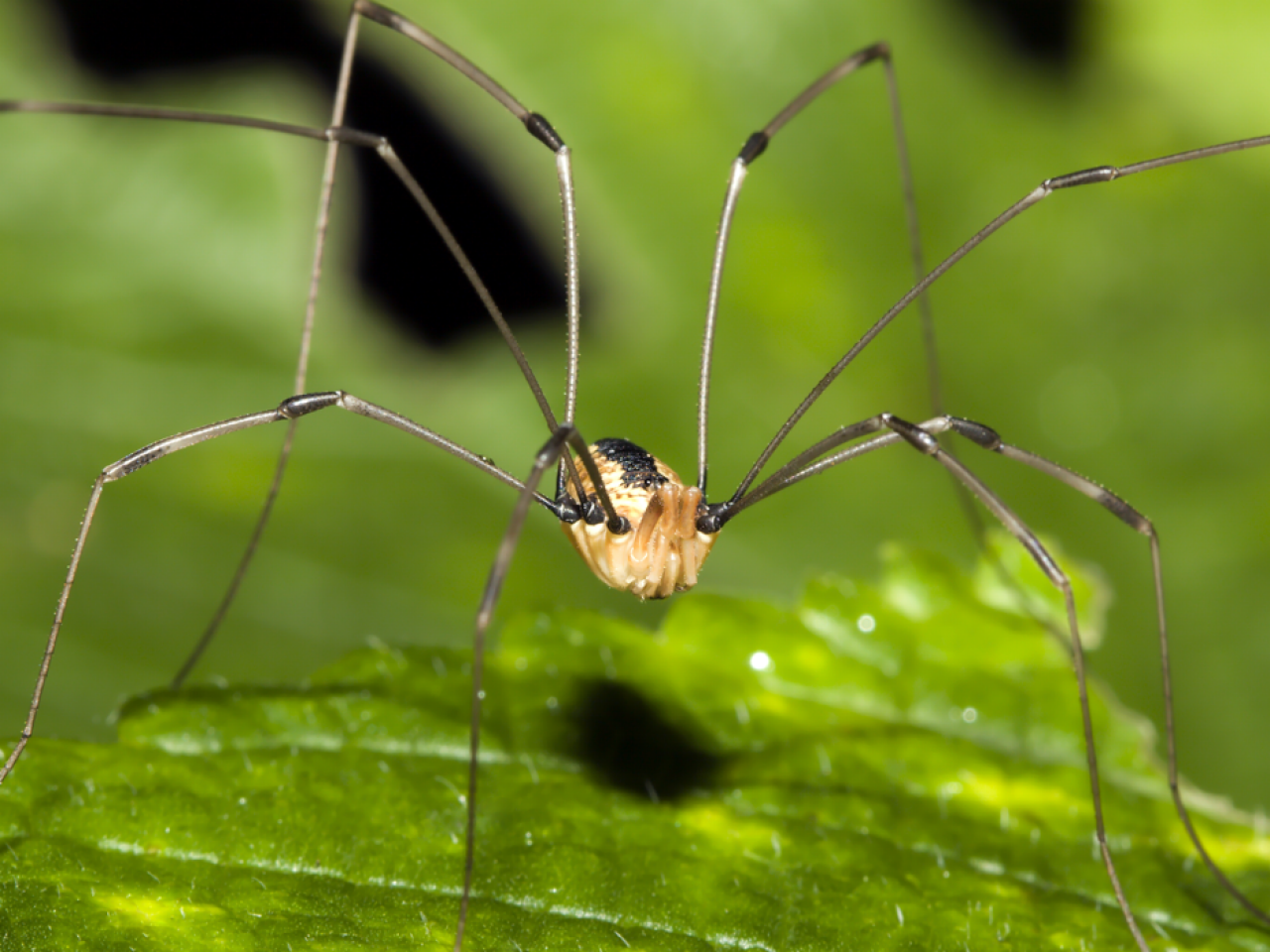
The term daddy longlegs typically refers to a variety of arachnids with long, slender legs and a small, round body. These spiders, belonging to different families including Pholcidae (cellar spiders) and Opiliones (harvestmen), are often recognized by their delicate, spindly legs and generally harmless demeanor. Despite their common name, daddy longlegs are not true spiders; harvestmen, for instance, are a separate order entirely.
Daddy longlegs are generally found in outdoor environments but can also be seen inside homes, often hiding under siding, in corners, or on and under decks. They thrive in moist, dark areas and are sometimes spotted on lawns or in trees. Despite their somewhat eerie appearance, these arachnids are completely harmless to humans. Contrary to popular myths, daddy longlegs do not possess venom glands and are not capable of inflicting significant harm.
Their primary benefit is their role in controlling insect populations, as they prey on a variety of small pests. Because of their non-aggressive nature and the myths surrounding their venom, daddy longlegs often evoke more curiosity than fear. Understanding these spiders’ role in the ecosystem can help alleviate any unnecessary anxiety about their presence in your home or garden.
Hobo Spider
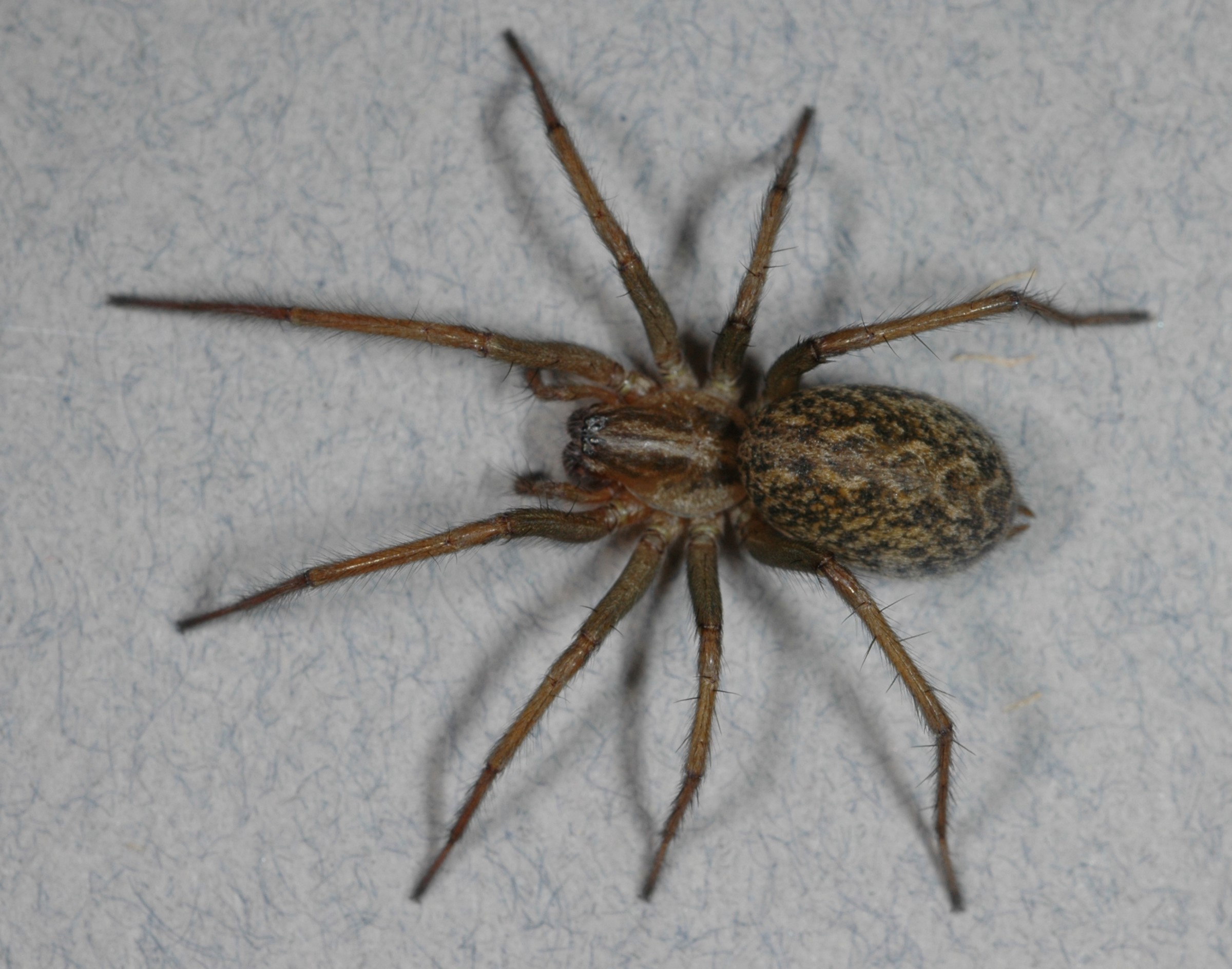
The hobo spider, known scientifically as Tegenaria agrestis, is a common but often misunderstood arachnid found in various regions, particularly in the Pacific Northwest of the United States. Characterized by its tannish-brown color and a mottled appearance with darker spots on its back, the hobo spider’s somewhat hairy legs and body give it a distinct, rugged look.
Hobo spiders are typically found in outdoor settings, especially in areas with abundant debris, such as under rocks, boards, or piles of leaves. However, they can also make their way indoors, seeking shelter in places like clothing, beds, or shoes. They are known for their web-building habits, creating funnel-shaped webs that serve as both a resting place and a trap for prey.
While hobo spiders are generally not aggressive, they can deliver a bite if provoked. The bite may result in localized red swelling and some pain, but it typically does not cause serious medical issues. Most bites can be managed with over-the-counter painkillers and ice, and symptoms usually improve within 24 hours. Despite their reputation, hobo spiders do not pose a significant health risk, making them more of a nuisance than a threat. Understanding their behavior and typical habitats can help reduce unwanted encounters and manage any potential issues effectively.
Jumping Spider

Jumping spiders are among the most fascinating and diverse groups of spiders, comprising over 300 species. Belonging to the family Salticidae, these spiders are renowned for their distinctive appearance and remarkable jumping abilities. They are small to medium-sized spiders, often featuring vibrant colors and patterns that can range from solid black with striking markings to intricate striped or iridescent designs.
One of the most notable features of jumping spiders is their large, forward-facing eyes. These prominent eyes provide them with exceptional vision, which is crucial for their hunting strategy. Unlike many spiders that rely on webs to catch prey, jumping spiders are active hunters. They use their excellent eyesight to stalk and pounce on insects, making them agile and precise predators.
Jumping spiders can be found in various environments, from indoor spaces to outdoor areas like gardens and trees. They do not build webs to trap their prey but rather employ their keen eyesight to detect and ambush their targets. Inside the home, they may be seen climbing walls or ceilings, while outside, they can often be spotted scaling buildings or trees.
Despite their sometimes intimidating appearance, jumping spiders are generally harmless to humans. Their bites are rare and usually cause minor irritation or discomfort. The primary danger they pose is their ability to give a sharp nip if handled roughly. Understanding their behavior and appreciating their role in pest control can help alleviate any concerns about these remarkable arachnids.
Yellow Sac Spider
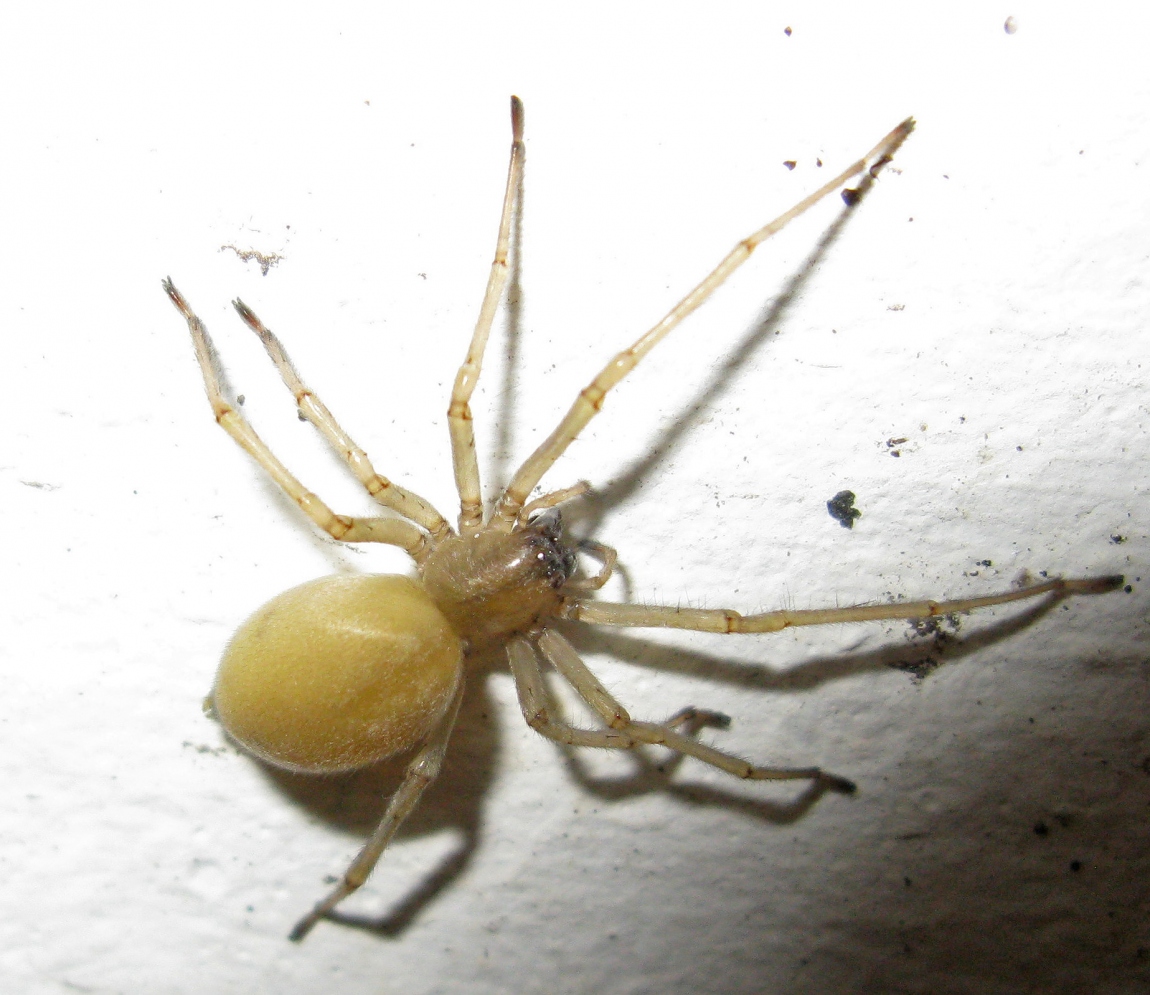
The yellow sac spider, known for its pale yellow or beige color and distinctive dark V-shaped marking on its body, is a common arachnid found both indoors and outdoors. These spiders belong to the family Miturgidae and are named for their habit of constructing a sac-like silk retreat.
Appearance: Yellow sac spiders are relatively small, with a body length ranging from 6 to 10 millimeters. They are usually pale yellow or beige, making them blend well with their surroundings. The most notable feature is their dark V-shaped marking on the abdomen, which helps in identifying them. Their legs are long and slender, and they often build a characteristic tent-like structure out of silk where they rest during the day.
Habitat: Yellow sac spiders are versatile in their habitat choices. They can be found in various environments, including gardens, living spaces, and other areas with ample cover. Inside the home, they are commonly found in the upper corners of rooms, such as where the wall meets the ceiling. They often seek out dark, undisturbed areas for their silk retreats, making them a common sight in places like attics, basements, and behind furniture.
Behavior: Unlike many spiders that build complex webs, yellow sac spiders create relatively simple silk sacs that serve as both a retreat and a hunting ground. They are nocturnal hunters, emerging at night to hunt for small insects. Their web is not sticky but rather serves as a protective shelter and a lookout point for catching prey.
Bites and Safety: While yellow sac spiders are not typically aggressive, they are capable of delivering a bite if provoked. Bites can cause localized pain, redness, and itching. In rare cases, particularly for individuals with compromised immune systems or pre-existing health conditions, more severe reactions may occur. However, serious medical issues from yellow sac spider bites are uncommon. If bitten, it is advisable to monitor the bite site and seek medical attention if symptoms worsen or do not improve.
Orb Weaver Spider
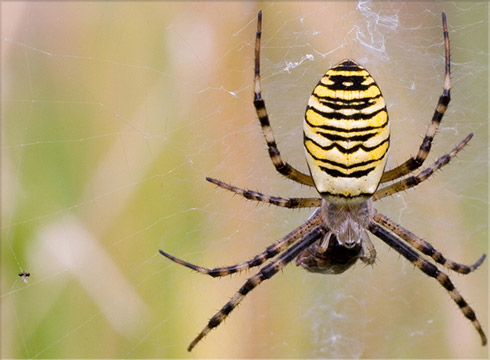
Orb weaver spiders are a captivating group known for their intricate and beautiful web designs. Belonging to the family Araneidae, these spiders are easily recognizable by their large, round abdomens and their skill in spinning elaborate, wheel-shaped webs. The term “orb weaver” refers to their distinctive web architecture, which is often a sight to behold, especially when adorned with morning dew.
Appearance: Orb weavers vary greatly in size and color, with some species displaying vibrant hues and patterns. They typically have a robust, rounded abdomen and long, slender legs. The abdomen’s coloration can range from brown and gray to bright yellow and orange, often featuring various markings or patterns that help them blend into their surroundings. Despite their diverse appearances, the common feature of their web structure unites them as a family.
Habitat: Orb weavers are highly adaptable and can be found in numerous environments. They prefer areas where they can build their intricate webs, such as gardens, yards, and the exterior of buildings. These spiders are often seen creating their webs in spaces with ample flying insect activity, such as around outdoor lighting or on the edges of porches and decks. Inside the home, they might build their webs in corners, particularly in areas where they are less disturbed.
Behavior: The primary activity of orb weavers is the construction of their webs, which are meticulously spun each day. These webs are designed to trap flying insects and are often rebuilt every night. The structure typically consists of a central hub with radiating threads and a spiral capture line that is sticky to catch prey. Orb weavers are skilled at repairing and maintaining their webs, and they are known for their ability to create these intricate structures with remarkable precision.
Bites and Safety: Generally, orb weaver spiders are non-aggressive and their bites are rare. If a bite does occur, it is usually minor, causing slight redness or irritation. These spiders are not considered dangerous to humans, and their bites are unlikely to result in serious medical issues. The real hazard from orb weavers is often the physical presence of their large webs, which can be a nuisance when encountered unexpectedly.
Grass Spider

Grass spiders, often mistaken for other species due to their common appearance, are fascinating arachnids known for their distinctive web structures and hunting behavior. They belong to the family Agelenidae, which includes various species collectively known as funnel weavers. These spiders are notable for their unique approach to building webs and their relatively harmless nature.
Appearance: Grass spiders are typically small to medium-sized, with a body length ranging from 1/4 to 1/2 inch. They are often brown or gray with a somewhat plain appearance, which can make them challenging to distinguish from other similar-looking spiders. One of their distinguishing features is the long, slender legs that extend from their compact bodies. A key characteristic of grass spiders is their long, finger-like spinnerets at the end of their abdomen, which they use to create their webs.
Habitat: Grass spiders prefer outdoor environments and are commonly found in grassy areas, hence their name. They often build their webs near ground level, in the grass, under leaves, or among other vegetation. These spiders can also be found around the foundations of homes, in gardens, and along pathways. Occasionally, male grass spiders may venture indoors in search of a mate, but they generally prefer to stay in their natural outdoor habitats.
Behavior: Unlike orb weavers, grass spiders are not web-builders in the traditional sense. Instead, they construct a distinctive, funnel-shaped web with a tubular retreat where they hide. This web structure allows them to quickly dart out and capture prey that ventures too close. Grass spiders are agile and use their webs primarily for trapping insects rather than for actively hunting. They are known for their speed and agility when it comes to capturing and immobilizing their prey.
Bites and Safety: Grass spiders are generally not aggressive towards humans and their bites are rarely harmful. If bitten, the symptoms are usually mild, such as slight redness or irritation at the bite site. There are no reported cases of significant medical issues resulting from a grass spider bite. Their venom is not potent enough to cause serious harm, making them relatively safe compared to some other spider species.
FAQs About Common House Spiders
1. What are the most common types of house spiders?
The most common types of house spiders include:
- American House Spider: Small, gray spiders with messy, tangled webs.
- Wolf Spider: Large, hairy spiders that do not build webs but hunt prey.
- Black Widow: Notorious for its shiny black color and red hourglass marking, it can be dangerous.
- Brown Recluse: Identified by a violin-shaped marking, known for its potentially harmful bite.
- Daddy Longlegs: Recognizable by their long legs and round bodies, harmless to humans.
- Hobo Spider: Brown spiders that may cause mild pain if they bite.
- Jumping Spider: Small, colorful spiders with large eyes, known for their jumping ability.
- Yellow Sac Spider: Pale yellow spiders that build silk sacs; can cause mild irritation if bitten.
- Orb Weaver Spider: Known for their large, intricate webs; rarely harmful.
- Grass Spider: Funnel weavers that build distinctive funnel-shaped webs; generally harmless.
2. How can I identify a Black Widow spider?
Black Widow spiders are identifiable by their glossy black bodies and the distinctive red hourglass-shaped marking on their underside. They may also have additional red markings on their back. These spiders prefer dark, undisturbed places such as corners, sheds, and mailboxes.
3. Are Daddy Longlegs dangerous to humans?
No, Daddy Longlegs are not dangerous to humans. Despite some myths, they do not possess venom glands and are harmless. They are often found in gardens or under outdoor surfaces but pose no threat to human health.
4. What should I do if I get bitten by a Brown Recluse spider?
If bitten by a Brown Recluse, seek medical attention immediately. Brown Recluse bites can cause necrotic wounds and require prompt treatment. Look for signs of severe pain, necrosis, and symptoms that may include fever or rash, and visit a healthcare provider for appropriate care.
5. How can I get rid of spiders in my home?
To manage spiders in your home, you can:
- Keep your home clean: Regular cleaning removes webs and potential hiding places.
- Seal entry points: Close gaps and cracks around windows, doors, and foundations to prevent spiders from entering.
- Use natural repellents: Essential oils like peppermint or eucalyptus can deter spiders.
- Reduce clutter: Minimize clutter in dark areas where spiders might hide.
- Remove webs: Regularly remove spider webs using a broom or vacuum.
Conclusion
Understanding the common types of house spiders and their behaviors is essential for managing these eight-legged residents effectively. From the harmless Daddy Longlegs and the colorful Jumping Spiders to the potentially dangerous Black Widows and Brown Recluses, each spider species plays a unique role in the ecosystem of your home. By recognizing their distinctive features and preferred habitats, you can make informed decisions about how to handle them.
Whether you choose to embrace the presence of beneficial spiders, take steps to prevent infestations, or seek professional help for dangerous species, knowledge is your best ally. Regular cleaning, sealing entry points, and using natural repellents are effective strategies for managing spider populations. And if a bite occurs or you encounter a species that poses a risk, prompt medical attention is crucial.
Ultimately, while spiders may evoke mixed feelings, their role in controlling other pests and contributing to biodiversity cannot be understated. By respecting their place in nature and understanding their behavior, you can maintain a harmonious living environment and keep your home both safe and spider-aware.

